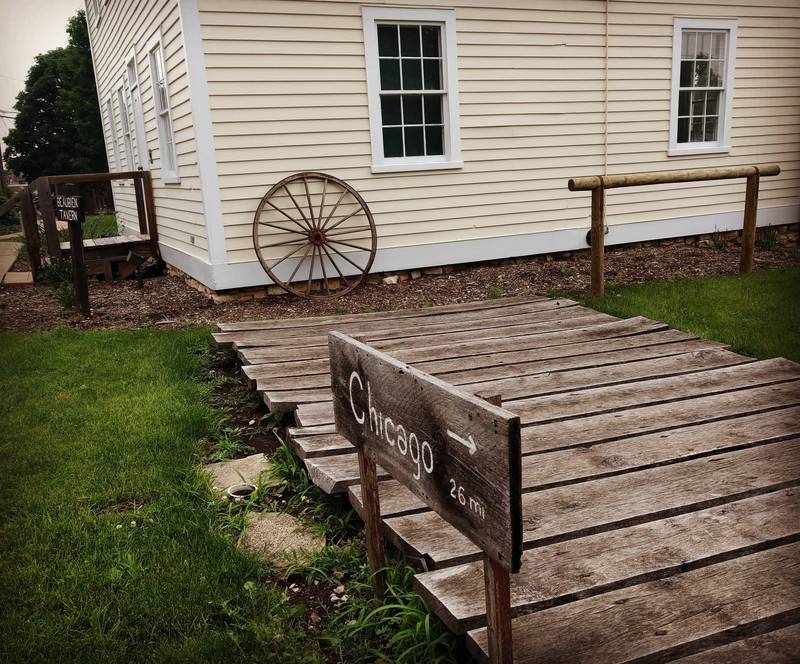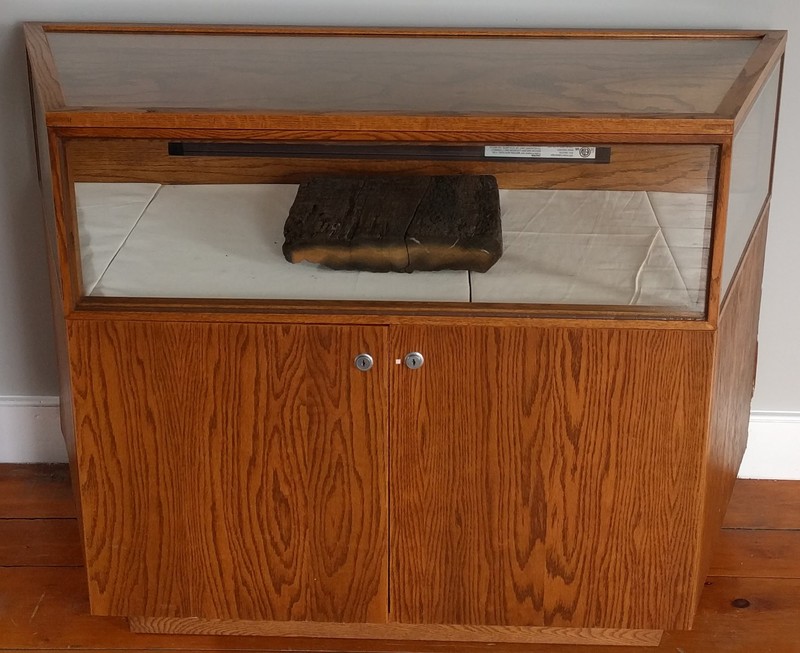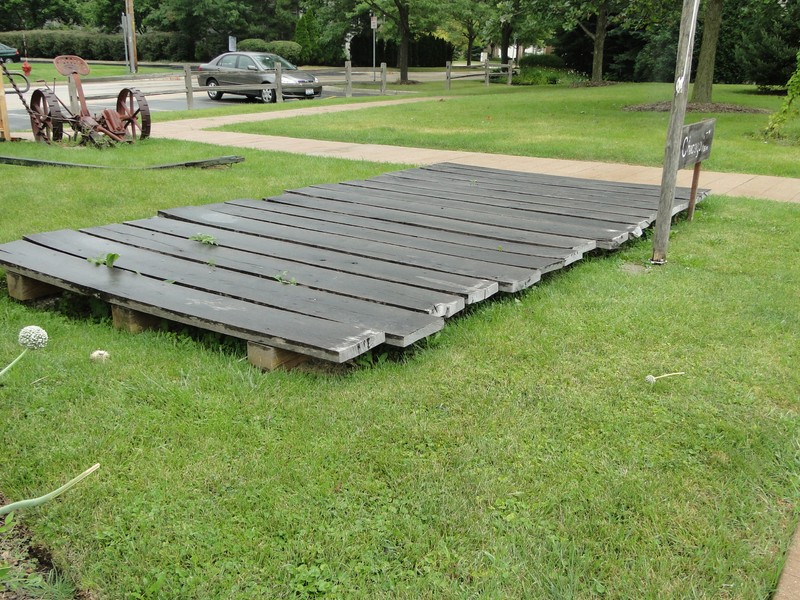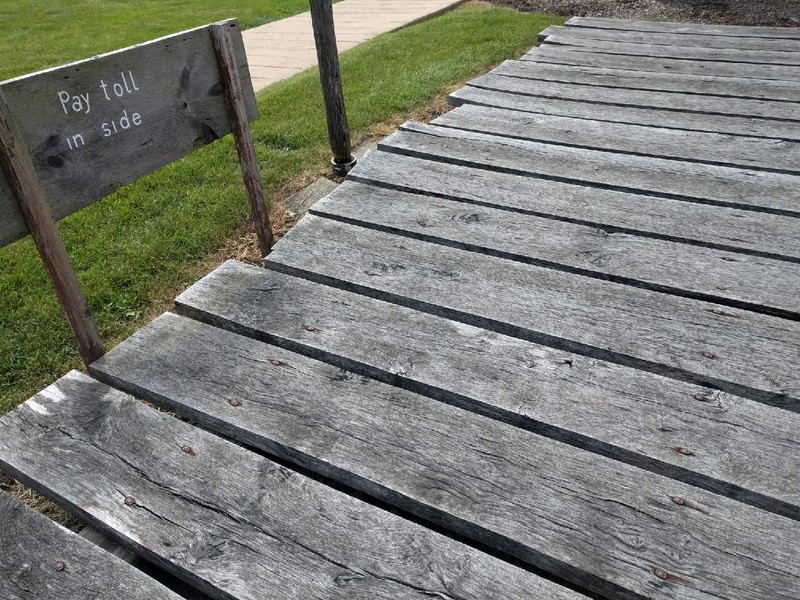Plank Road Reproduction Display
Introduction
Text-to-speech Audio
Images
Plank Road Reproduction: Plank Roads typically had two lanes made of boards 8-12 ft wide for each lane..

An original piece of the Southwest Plank Road from Chicago to Naperville. This piece was found about one mile east of Lisle.

White oak wood has very small pores, reducing the risk of water soaking through each plank. Zoom in to see the sides of each plank in the rain.

Businesses along the plank roads could act as toll houses, like many of the taverns along the Southwest branch through Lisle.

Backstory and Context
Text-to-speech Audio
Transportation in the 19th Century
The 1800s saw rapid changes in how people traveled from place to place. As European settlers moved westward, they developed more and more ways to make long-distance travel easier. Canals used existing rivers and man-made waterways to carry people and material. While they made travel easier, they could only be used when they weren’t frozen. They were also time and labor-intensive to build. Plank Roads, made from wooden planks like the piece below, were used primarily to move agricultural products to cities like Chicago. These began spreading all over the United States during the 1840s. They were heralded as a low-cost, modern alternative to canals and dirt trails. These methods of transportation were difficult to build and maintain, and were quickly eclipsed by the growth of the railroad. The ease of use and rapid speed of trains meant that farmers preferred using them to hauling carts onto canals or over plank roads.
The Beaubien Tavern and the Southwest Plank Road
Mark Beaubien was a businessman who invested in the Southwest Plank Road. His investment ensured that a tollhouse was placed outside his tavern along what is now Ogden Avenue. He also ensured that a junction south towards Naperville was placed beyond his tollgate, meaning that he would receive tolls from all travelers moving west. He and his son, Mark Jr, operated the tavern, inn, and tollhouse for several years after the completion of the Southwest Plank Road in 1851. After the Plank Road began to fall into disrepair, people used alternative forms of transportation. The lower traffic along the Southwest Plank Road meant that Mark was unable to pay taxes on his property and was forced to sell the tavern in 1859.
Cite This Entry
Gibson, Concetta. "Plank Road Reproduction Display." Clio: Your Guide to History. March 30, 2020. Accessed August 15, 2025. https://theclio.com/entry/109680/tour/2
Sources
Resources collected and researched by The Museums at Lisle Station Park (MLSP) staff and volunteers
MLSP
MLSP
MLSP. Jones, Dr. P. David, "Basic Guide to Wood Identification of Hardwoods and Softwoods Using Anatomical Characteristics", Mississipi State Extension Service, 2010.
MLSP

